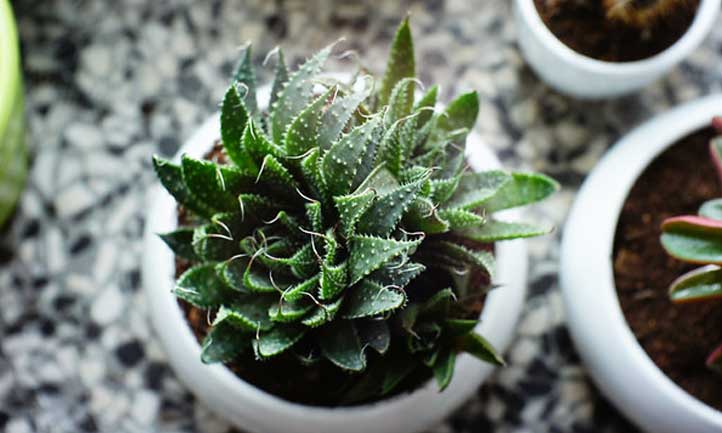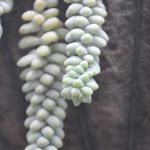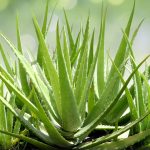Lace Aloe, also known as Aloe Aristata or Aristaloe aristata, is an ideal succulent plant for indoor gardening, originating from South Africa. It features fleshy dark green leaves with soft white bumps, along with orange-red flowers that bloom on tall stems, changing colors with the seasons. Despite its haworthia-like appearance, this plant is a remarkable addition to any collection, thriving in various conditions and perfect for xeriscaping.
Discover more about this unique succulent and learn how to nurture it for optimal growth.
Quick Care Guide

| Common Name(s) | Lace aloe, guinea-fowl aloe, torch plant |
| Scientific Name | Aristaloe aristata (formerly Aloe aristata) |
| Family | Asphodelaceae |
| Height & Spread | 6-9″ tall and 1-2′ wide |
| Light | Full sun to partial shade |
| Soil | Dry, well-draining |
| Water | Low |
| Pests & Diseases | Mealybugs, scale, root rot |
All About Aloe Aristata
Lace Aloe, also known as Torch Plant, is a resilient species that can thrive in various conditions. With triangular leaves covered in white spikes and fine cilia, this plant belongs to the Asphodelaceae family. Sporting peach-colored flowers in summer, attracting bees, this aloe can reach up to 16-18” in height. Although hardier than other aloes, this plant requires protection from harsh winter conditions, benefiting from sunlight during summers and warmth for optimal flowering in autumn.
Aristaloe Aristata Care
Aristaloe aristata, or Torch Plant, is low-maintenance but thrives with proper care. As an indoor succulent, it prefers bright light, adequate temperatures, and infrequent watering, especially as it matures.
Light & Temperature
Provide adequate light by placing the Torch Plant in a well-lit room or under suitable grow lights. Ensure a minimum temperature of 50°F (10°C) for optimal growth, especially for flowering.
Water & Humidity
Water as needed, keeping soil moist during growth phases and reducing frequency as the plant matures. Avoid overwatering and prevent water accumulation in the rosette.
Soil
Use well-draining soil, such as cactus mix, to prevent water retention. Enhance drainage by adding perlite, vermiculite, or pumice to the soil mix.
Aristaloe Aristata Fertilizer
Fertilize monthly during the growing season, reducing frequency in fall and winter once the plant matures.
Repotting Lace Aloe
Repot in spring using a slightly larger, shallow pot. Ensure proper drainage and avoid burying the plant too deep in the soil.
When propagating, wait for spring to detach and replant pups as independent plants. Prune only diseased or dead leaves to encourage healthy growth in the Torch Plant.
Troubleshooting
Watch for watering issues in fully grown plants, addressing wilting, yellowing leaves, and root rot by adjusting watering practices accordingly.
Growing Problems
Improper watering can lead to wilted or discolored leaves and root issues, common in Lace Aloe plants.
Concerns with Pests
During over-watering in winter, issues with pests may arise with Aloe aristata plants, especially the attraction of mealy bugs. These scale insects tend to hide beneath the leaves and may even penetrate the roots, potentially causing harm to the entire plant. In such a situation, employing insecticidal soap or neem oil can effectively eliminate the mealy bugs from the plant.
Moreover, Lace Aloe may also fall victim to other scale insects during the winter season, primarily affecting the stem and flowers, visible through brown or white spots on the leaves.
To address these pesky invaders, one could opt for bug sprays or opt for a more hands-on approach by manually removing the insects with a damp cloth from the stem and leaves. A high-pressure hose can also be used to blast the plant, effectively forcing the pests to either perish or flee promptly. Alternatively, neem oil or insecticidal soap can also serve as viable solutions.
Concerns with Diseases
If over-watering occurs, Aloe plants are at risk of developing root rot, signified by a brown, mushy base. In this scenario, it is advisable to remove the plant from its pot or planting area and replant it in a dry, fresh medium. After a few days, inspect the base of the plant. If the issue persists, complete removal of the plant may be necessary.
Queries Frequently Posed
Q: Is Aloe aristata synonymous with Aloe vera?
A: Albeit belonging to the Asphodelaceae family, Aloe aristata differs from Aloe vera and shares more similarities with haworthia plants.
Q: Can Lace Aloe be consumed?
A: Unlike Aloe vera, which is safe for consumption, Aloe aristata possesses poisonous leaves and can be harmful if ingested.
Q: What is the typical size of Aloe aristata?
A: An Aristaloe aristata plant generally grows between 8 to 12 inches in height.
Q: What is the recommended watering frequency for Aloe aristata?
A: Water your Aristaloe aristata plant when the top layer of soil is entirely dry.
Q: Is lace aloe harmful to dogs?
A: Yes, it is advised to keep lace aloe away from pets and children due to its toxic nature.
Q: Do aloe plants thrive in larger pots?
A: While some aloe species may require larger pots, the dwarf Lace Aloe plant does not necessitate a sizable container.
Q: Can you propagate lace aloe from a leaf?
A: While propagation from leaves is possible, separating offsets or pups from the mother plant is a more straightforward method.
Q: How much sunlight does lace aloe require?
A: Lace Aloe thrives in full sun, although it can also adapt to partial sun or shade conditions.






